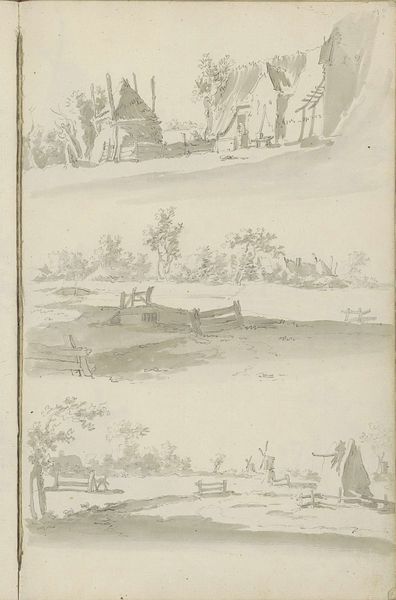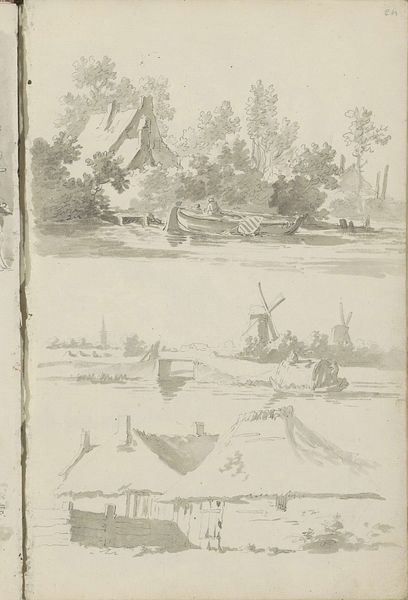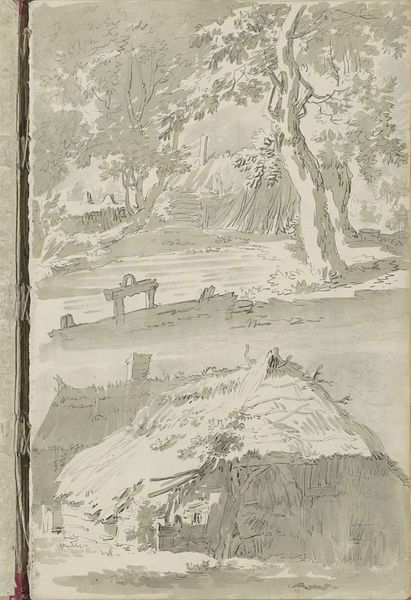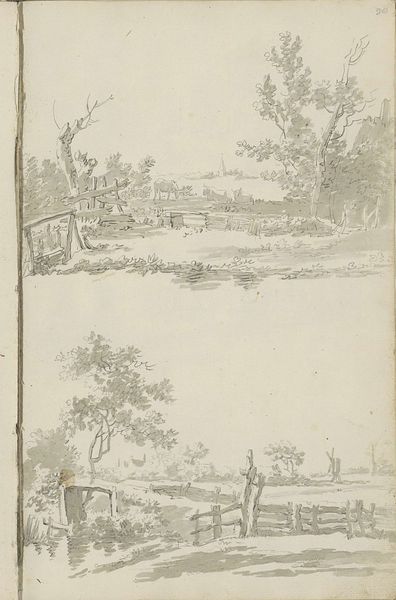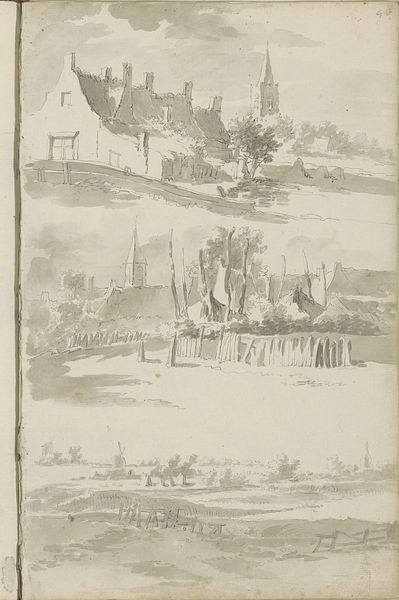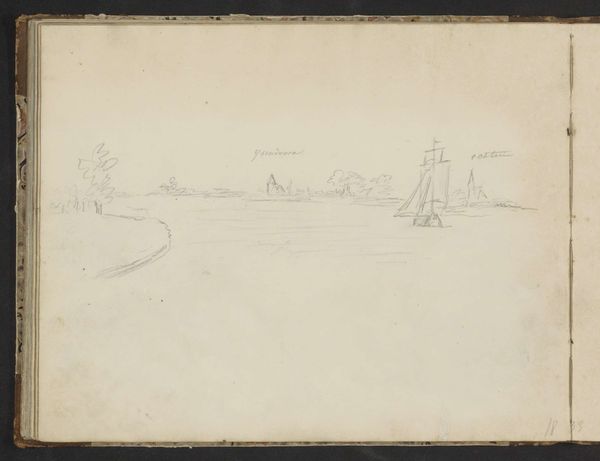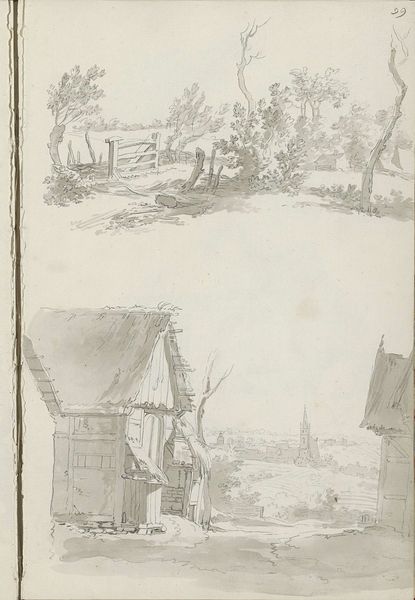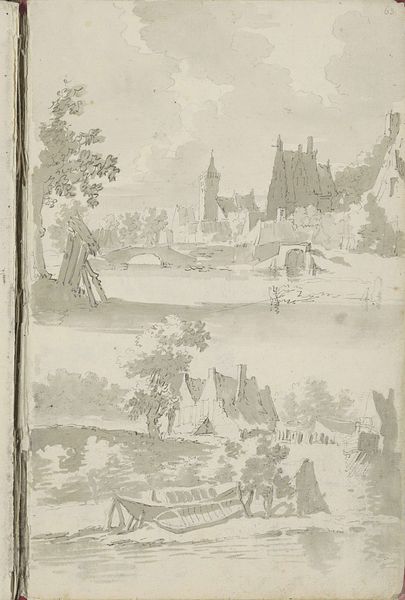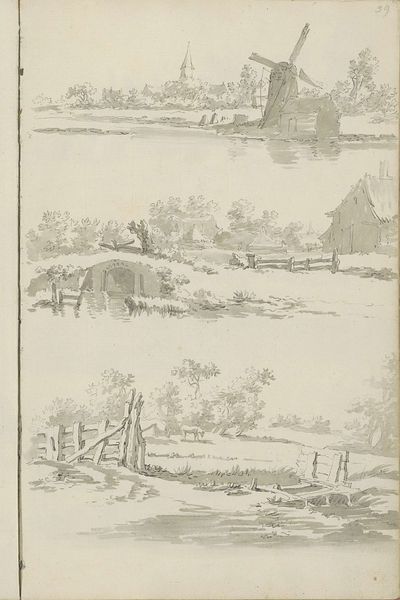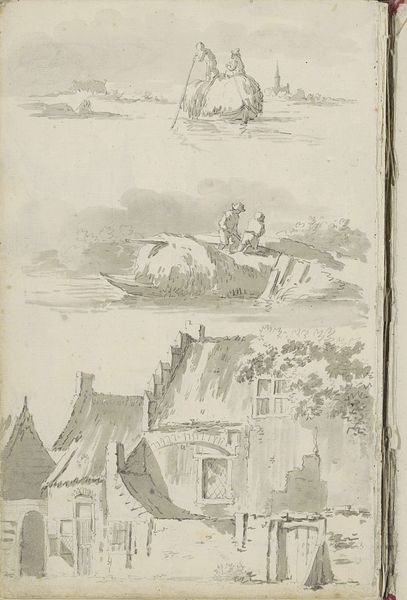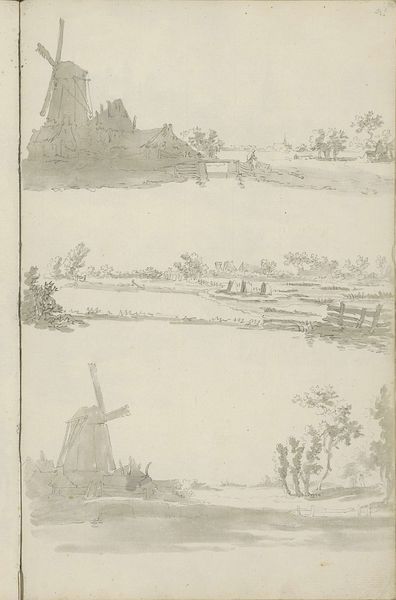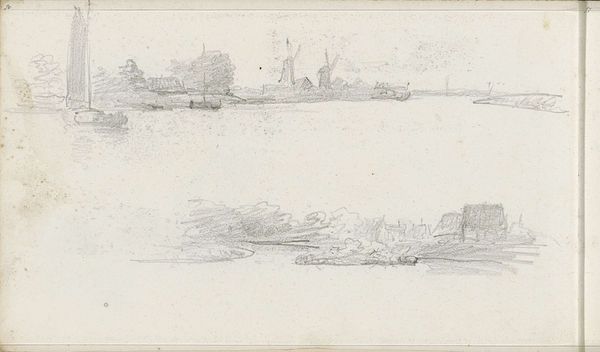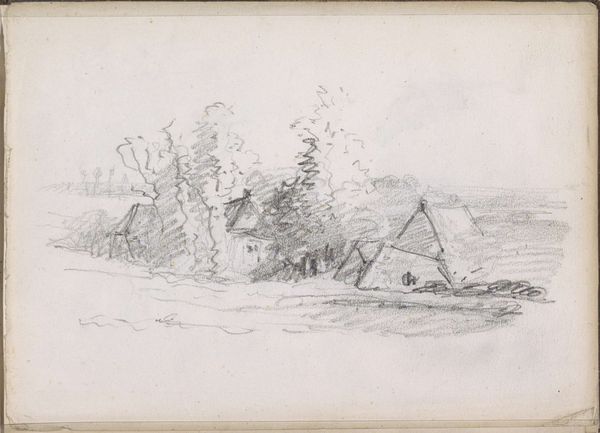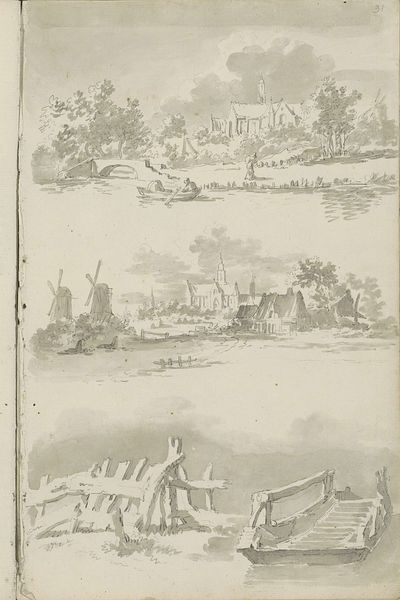
#
amateur sketch
#
toned paper
#
light pencil work
#
pen sketch
#
pencil sketch
#
etching
#
personal sketchbook
#
pen-ink sketch
#
sketchbook drawing
#
sketchbook art
Copyright: Rijks Museum: Open Domain
Curator: At first glance, this seems like a quick study, capturing a tranquil, rural scene. I'm drawn to the simple bridge reflected in the water. Editor: Indeed. What we have here is a sheet with two landscape sketches by Barend Hendrik Thier, dating from around 1780 to 1800. Look at how he's used pen and ink on toned paper to create these village scenes. Curator: Toned paper! I hadn’t even considered the support. How would the artist procure such paper? What would have been its cost relative to the cost of labor required to create these sketches? Editor: Well, such toned papers would have been accessible in larger artistic communities, likely involving a commercial network for distribution, and possibly reflecting increased specialized skillsets among those engaged in the trade and handling of artist's materials. But coming back to the work, it gives us a glimpse into artistic practices and the burgeoning leisure class interested in picturesque views. How were the burgeoning professional lives of artists funded through such materials? Curator: And it seems created directly *in situ*, perhaps as an etching practice piece for some later, grander project. Look closely at how the figures are situated and positioned. What kind of dialogue exists here between observation and documentation of an everyday village setting? Editor: Precisely! These sketches speak to a broader eighteenth-century interest in documenting landscapes and vernacular architecture, fuelled by scientific expeditions and the rise of tourism. These drawings also invite further analysis. Who was this work intended for? Was the market dictating choices for artists and thus creating cultural standards or tastes through their commodified supplies? Curator: Absolutely, there’s so much to unpack here in terms of artistic intent and the historical context of its creation and likely consumption! Perhaps its value resides as less of an end-product and more a form of preparatory mark-making. Editor: True. This unassuming work raises compelling questions about art's public role and the politics embedded in imagery from this period.
Comments
No comments
Be the first to comment and join the conversation on the ultimate creative platform.
